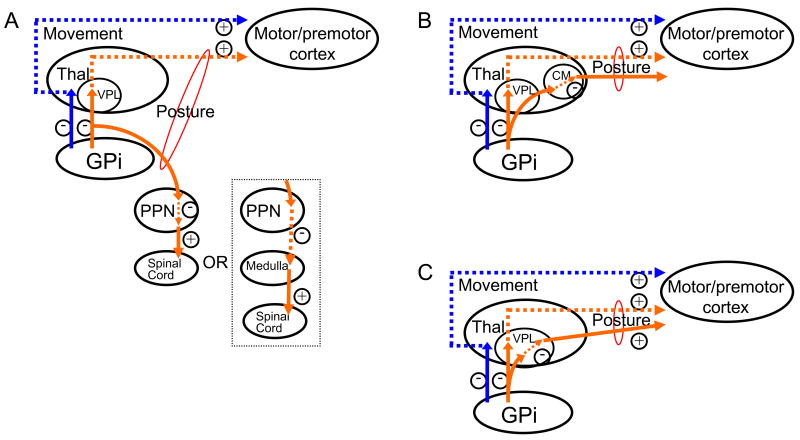Figure 2.
Pallidal output fiber arborization patterns in monkeys could support a system that activates (or disinhibits) postural system function whether or not these inhibitory output neurons are active. Some of the output neurons from the internal segment of the pallidum (GPi) in monkeys have been shown to send off collaterals that project to regions other than the motor thalamus (ventral posterolateral nucleus [VPL] shown here for humans; data is from ventral anterior nucleus in monkeys). These regions include (A) the pedunclopontine nucleus (PPN) and (B) the centromedian nucleus of the thalamus (CM) [33]. Collaterals are also sent off (C) within the motor nucleus of the thalamus [40]. Orange lines indicate pathways controlling posture; blue lines indicate pathways controlling movement. Solid arrows indicate neurons which are active/disinhibited when GPi inhibition is tonically active (i.e. in the absence of dopamine-induced activation of putamen output neurons) and inhibited when this inhibition is removed (during dopamine-induced activation of putamen output neurons). Dotted arrows indicate neurons that are inhibited when GPi inhibition is tonically active and active/disinhibitied when this inhibition is removed.

